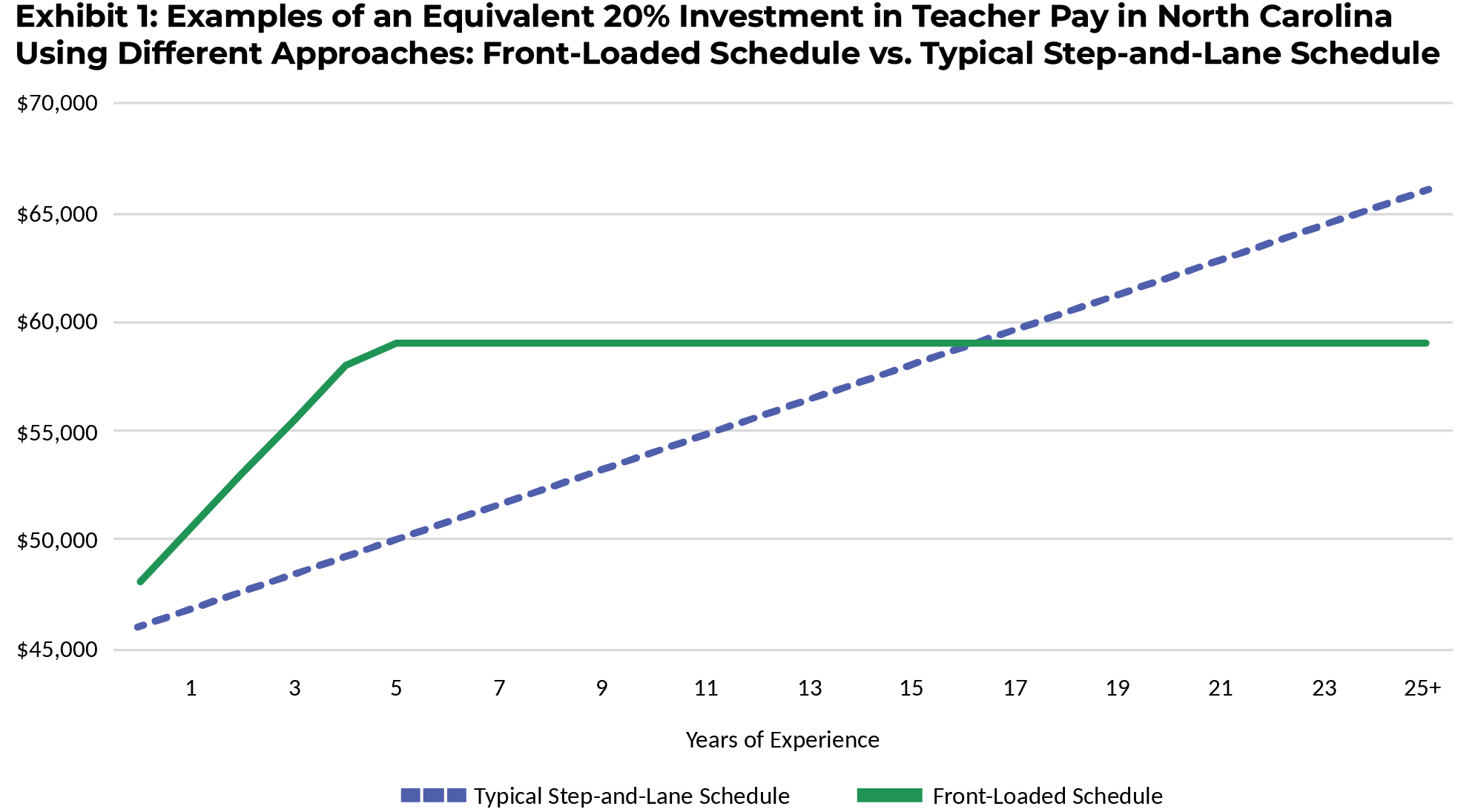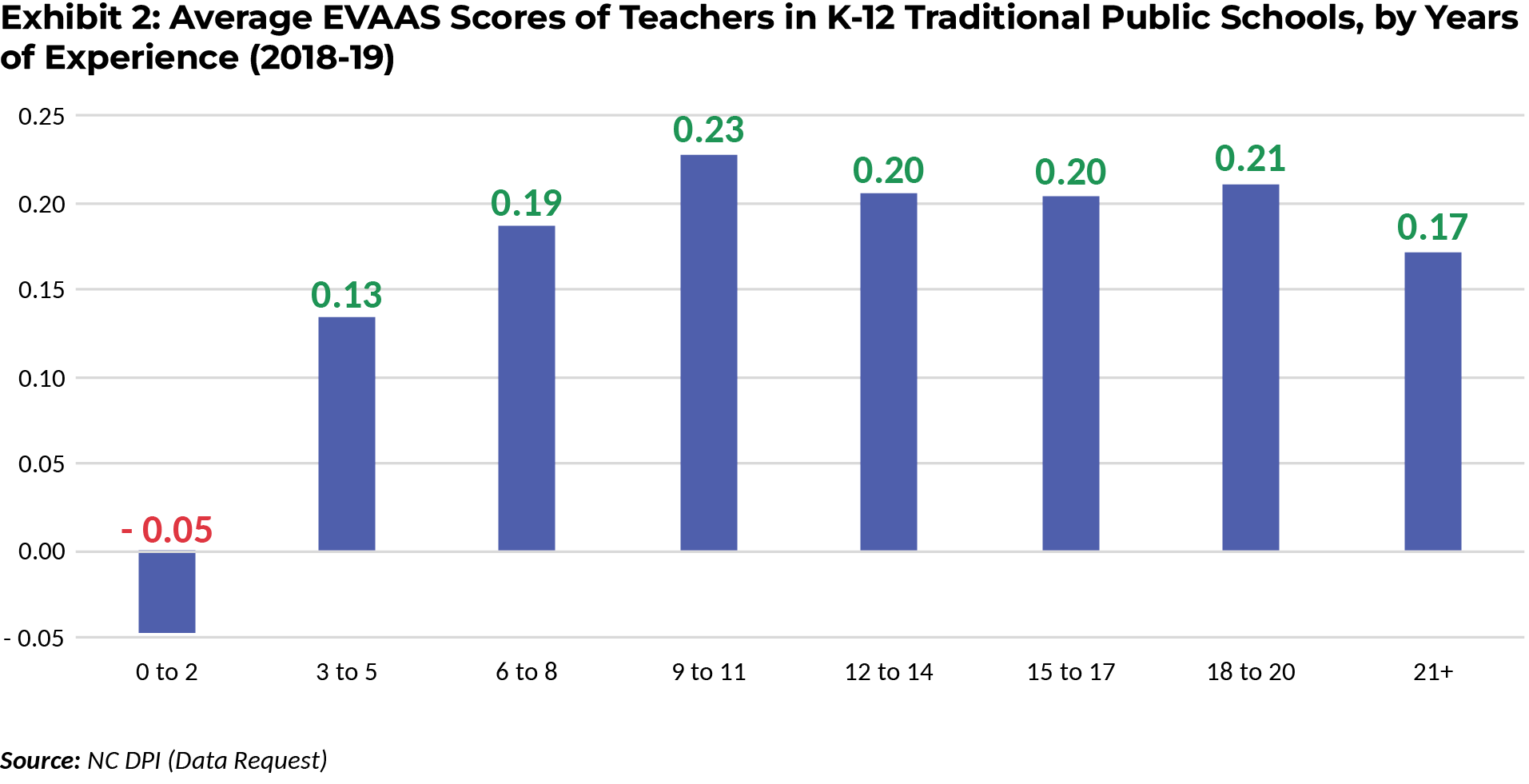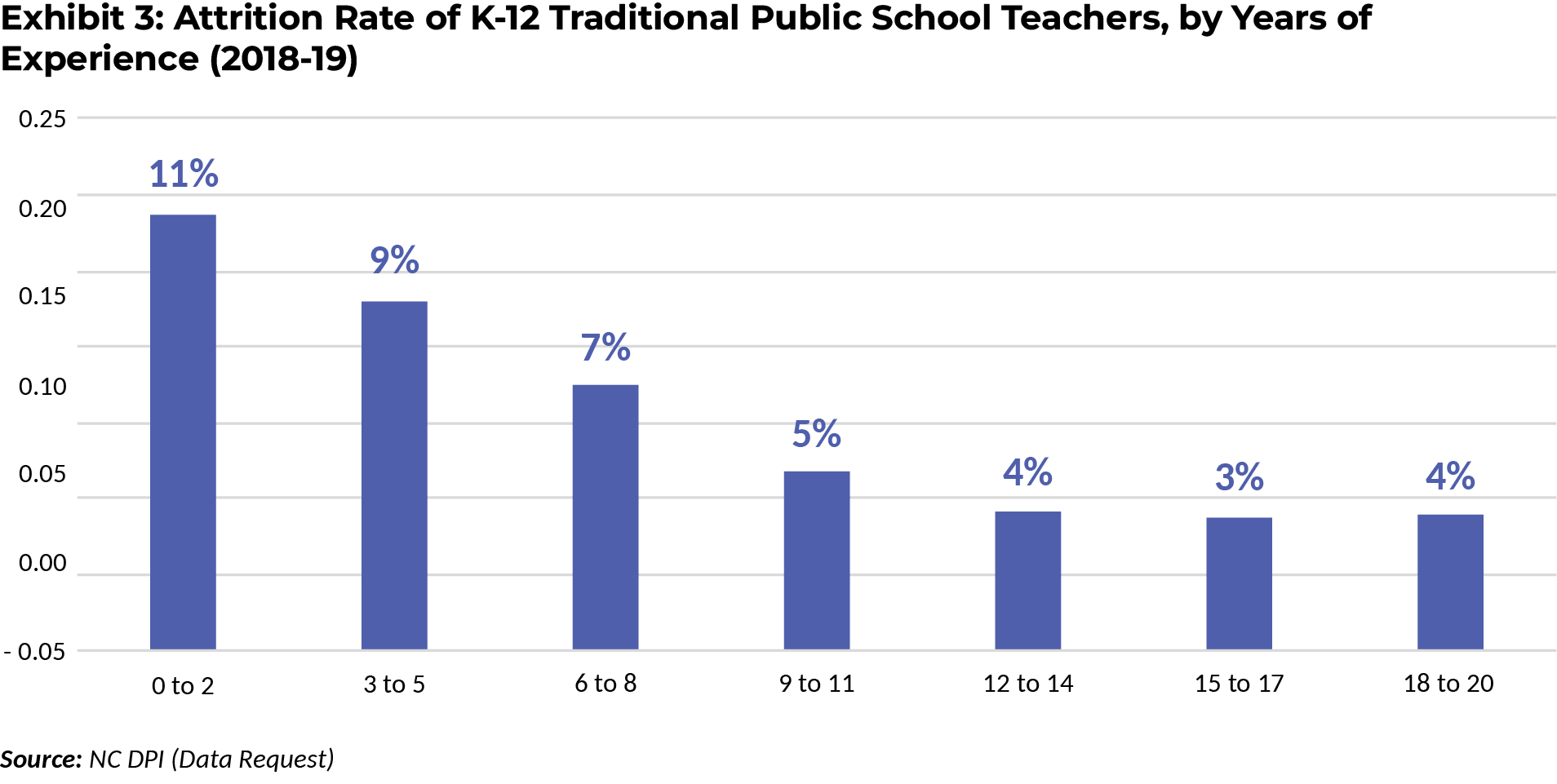Best Practices in Teacher Pay: Front-Loading Base Pay for Professional Growth
A comprehensive, professional compensation plan includes layered pay strategies that build on one another to ensure the recruitment and retention of a high-quality workforce. This is the first in a series of blogs highlighting best practices in teacher pay featured in detail in BEST NC’s report, Teacher Pay in North Carolina: A Smart Investment in Student Achievement.
Front-Loading Base Pay for Professional Growth
We begin this blog series by examining a key component of any competitive compensation model, a base pay schedule that provides a living wage and builds with professional expertise. We refer to this foundational component as “Front-loaded Base Pay” and will utilize the next four blogs in our series to highlight the many benefits of a front-loaded pay schedule, beginning with Part 1: Front-Loading for Professional Growth.
In contrast to pay practices in most professional industries, teacher compensation in North Carolina and across the country is driven by a 100-year-old step-and-lane salary schedule that bases pay solely on years of experience and educational attainment. As discussed in our recent blog, BEST NC Releases Comprehensive Teacher Pay Report – BEST NC, we find that this outdated pay and retention structure fails to recruit and retain the top-tier teaching candidates our students deserve.
Exhibit 1, Below, demonstrates the difference between a traditional step-and-lane pay structure like North Carolina’s and a front-loaded pay schedule. Although lifetime income is the same if someone stays in the profession for 30 years, the front-loaded pay schedule allows teachers to reach their maximum base pay earlier in their careers. This aligns with the years in which most teachers demonstrate the greatest amount of professional growth, as well as living wage increases that we will examine in the next post.

Note: This graph only represents base pay on top of which teachers should be eligible to receive additional supplements, bonuses, and raises later in their careers, including by taking on Advanced Teaching Roles and extending their reach to more students. Additionally, the entire schedule shifts up over time, typically to address inflation.
A front-loaded base pay structure is used in many professional industries and is premised on the fact that pay rises along with employees’ sharp increase in professional skills early in their career. Like these other professions, research that suggests increases in teacher effectiveness are most significant during the first three years of a teacher’s career and level out after year five. This can be visualized by examining student growth data for North Carolina teachers at various points in their careers (see Exhibit 1 below). The most significant gains are seen between 0-2 and 3-5 years of experience and peak, on average, around the eighth year of teaching.

A front-loaded teacher pay schedule aligns pay increases to the parts of a teacher’s career in which they are making the largest gains in their ability to positively impact student learning.
Increasing early-career teacher pay also has implications for teacher retention. A study of teacher pay and retention in Texas from 1996 to 2012 found that increases in teacher base pay had greater positive impacts on teacher retention during the early parts of a teacher’s career (years 1 to 7) and no effect on the retention of teachers with 12 or more years of experience.
Exhibit 3 below shows the number of teachers in North Carolina by years of experience and their attrition rates, affirming that, in the first 20 years of a teacher’ careers, the greatest attrition happens in the first six to eight years of teaching. Increasing and front-loading North Carolina’s teacher salary schedule works to combat these high attrition levels by providing a compensation incentive for more early-career teachers to continue in their careers.



